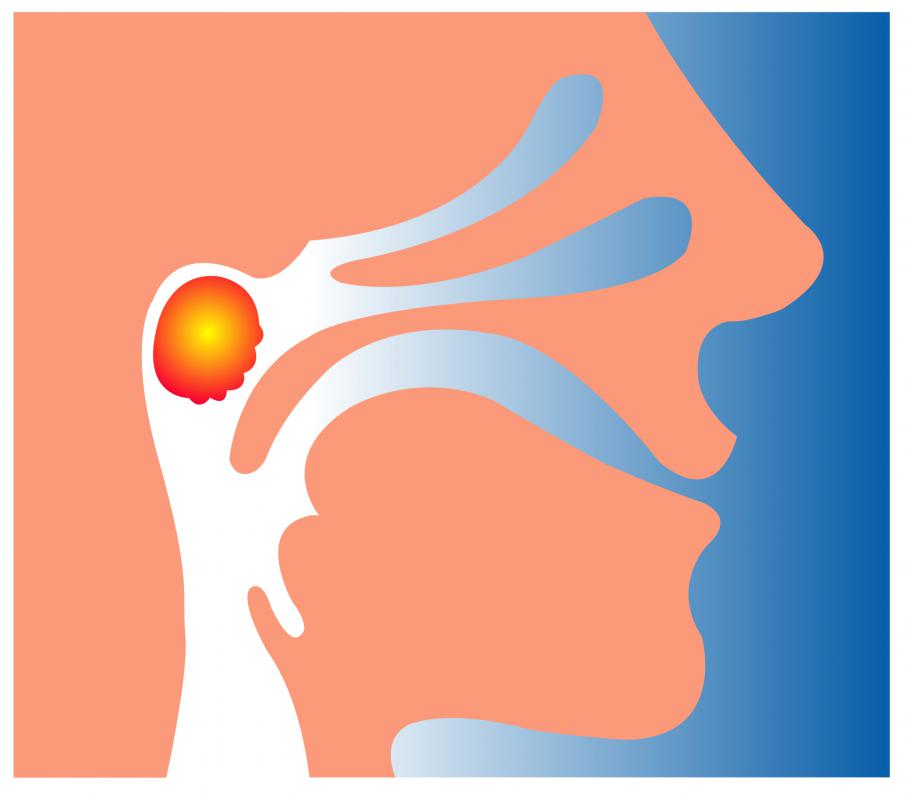At WiseGEEK, we're committed to delivering accurate, trustworthy information. Our expert-authored content is rigorously fact-checked and sourced from credible authorities. Discover how we uphold the highest standards in providing you with reliable knowledge.
What Is Adenoid Hyperplasia?
Adenoid hyperplasia, also known as adenoid hypertrophy, refers the the enlargement or swelling of the lymph glands at the top and back of the mouth, called the adenoids. Excessive growth of the adenoids can occur for a few different reasons. Treatment depends mostly on the severity of the condition, and partially on its cause.
The tonsils and adenoids work together, playing a role in the development and maintenance of the immune system. Adenoids are small when a baby is born, grow during childhood, reach their full size in late childhood or early adolescence, and then start to shrink again. Large adenoids are common and normal in childhood, and many cases of adenoid hypertrophy will go away with age.

Adenoid hypertrophy may be just part of the normal growth pattern, or the glands may fail to stop growing after reaching their full size. Sometimes adenoid hyperplasia occurs when a child has recurrent infections such as sinus infections, ear infections, or strep throat. The glands swell in order to better fight off the infection, and may not shrink fully again. If a child has many infections, the cumulative effect of this growth pattern can result in adenoids large enough to cause problems.

The symptoms of adenoid hyperplasia include trouble breathing through the nose, snoring, or recurring or long-term nasal congestion. In the case of acute infections, adenoid hyperplasia is often lumped in with tonsillitis, since the swollen and inflamed tonsils are easier to see than the adenoids. Children who have had very enlarged adenoids for a long period of time may develop changes in the voice and facial features caused by constant mouth breathing.

Surgery is sometimes required for adenoid hyperplasia, and was once the treatment of choice for this condition. It is now known that the tonsils and adenoids play an important role in childhood immunity, and medical professionals try and avoid removing them unless the symptoms are severe, chronic, or other treatments have failed. The surgery, called an adenoidectomy, is often combined with tonsillectomy, or removal of the tonsils. A mirror and/or surgical imaging instruments are used to see the adenoids, and they are then removed through the mouth.

If the adenoid hyperplasia is not severe enough to warrant surgery, there are other options. Herbal treatments can assist in immune system functioning and soothing the inflamed glands. Antibiotic treatment is used to combat the underlying infection before the adenoids get too large. Food allergies can cause recurrent infections or immune system reactions, and so eliminating the food in question often fixes the underlying problem.
AS FEATURED ON:
AS FEATURED ON:















Discuss this Article
Post your comments